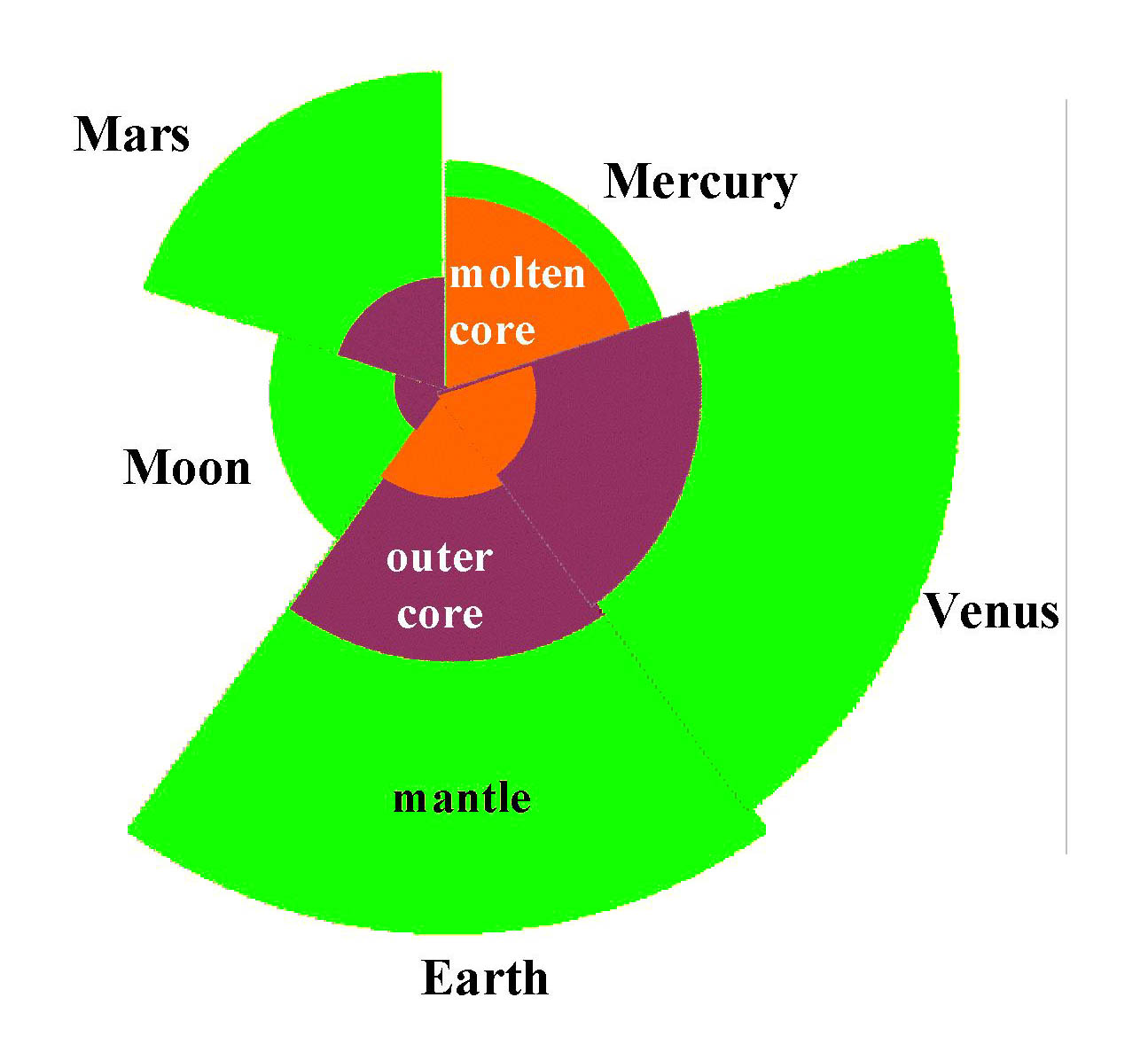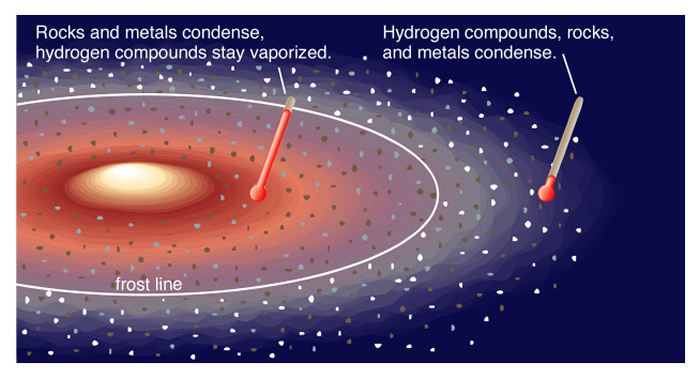
Key points: Terrestrial and giant planets; range of properties with distance from sun and what drives them; retention of gas and atmospheres
The Planets to Scale; from the sun, the "terrestrial planets" are Mercury, Venus, Earth, and Mars, while the "giant planets" are Jupiter, Saturn, Uranus, and Neptune (Pluto as an oddity at the end*). (from http://www.adamnieman.co.uk/futurelab/)
*On August 24, 2006, the International Astronomical Union - the body that oversees such matters - voted to strip Pluto of its planet status. By official decree, we now have only eight planets.

 |
Here is a rough comparison of their interior structures. (by G. Rieke) |
Distances from the sun range from about 5 AU (Jupiter) to 30 AU (Neptune)
Average densities are low, similar to water: Jupiter is 1.3 grams/cm3 and Saturn is 0.7 grams/cm3
Composition similar to Sun -- (especially Jupiter and Saturn)
Liquid or icy surfaces
Dense atmospheres with violent and long lasting storms
Strong magnetic fields (Jupiter and Saturn)
 |
Here is a comparison of their interiors (by
G. Rieke). We have put in the earth for comparison. It is not very different in mass than the rocky/metallic cores of the giant planets, indicating that all the planets started with similar reservoirs of raw material. The differing properties have to arise from how the planets formed from these reservoirs. |
 |
The densities and compositions of the planets are correlated with how close they are to the sun, and hence the temperature at which they had to form. (From The Essential Cosmic Perspective, by Bennett et al.) |
 |
Low density ices could only condense in the zone of giant planets, where temperatures were low. (by G. Rieke, some data from Univ. of Michigan Global Change Program, http://www.sprl.umich.edu/GCL/) |
Test your understanding before going on![]()

The Birth of Venus, by Sandro Botticelli |

Pioneering space art by Chesley Bonestell, http://www.bonestell.org/, http://www.dreamstone.com.au |
|
Click to return to syllabus |
||
| Click to return to Formation of Planets | hypertext |
Click to go to Exploration of the Solar System |